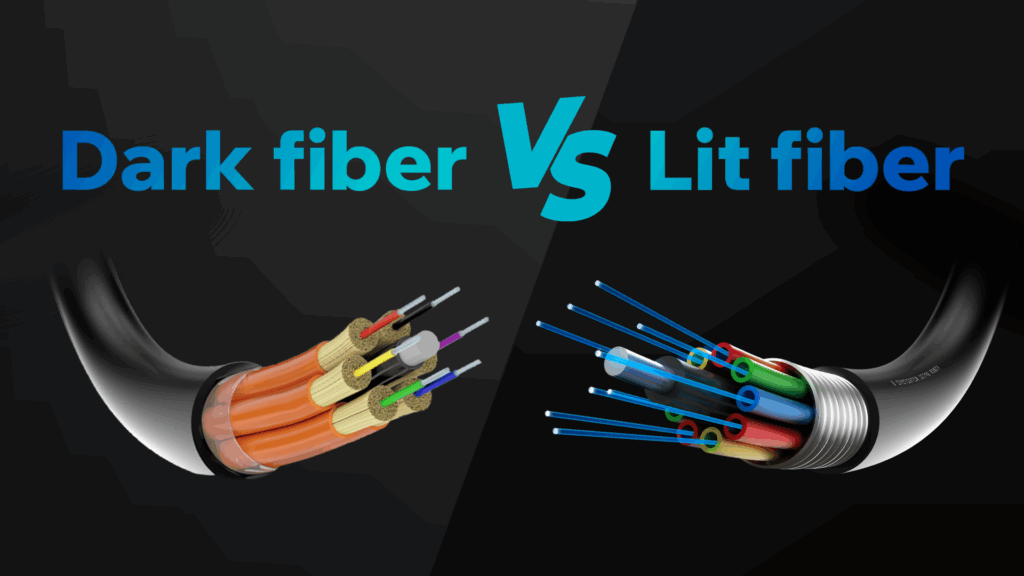
In the world of fiber optic networks, businesses often face a choice between dark fiber and lit fiber. Understanding the differences between these two options can help you make an informed decision that aligns with your company’s needs and goals. In this blog post, we’ll explore what dark fiber and lit fiber are, their advantages and disadvantages, and which might be the best fit for your business.
What is Dark Fiber?
Dark fiber refers to unused fiber optic cables that are available for lease. These cables are “dark” because they do not have any active equipment attached to them. When you lease dark fiber, you are responsible for “lighting” it by installing and managing the necessary equipment.
Advantages of Dark Fiber:
- Full Control: You have complete control over the network and equipment setup.
- Scalability: Easily scalable by changing your own hardware.
- Security: Offers a high level of security as you manage the network.
Disadvantages of Dark Fiber:
- High Initial Cost: Requires a significant upfront investment.
- Maintenance: You are responsible for all maintenance and repairs.
- Technical Expertise: Requires skilled in-house IT staff to manage the network.
What is Lit Fiber?
Lit fiber, on the other hand, is managed by service providers. It comes with active equipment and is ready to use, making it a plug-and-play solution. The service provider handles all aspects of the network, including maintenance and upgrades.
Advantages of Lit Fiber:
- Ease of Use: Minimal technical knowledge required internally.
- Predictable Costs: Fixed monthly fees make budgeting easier.
- Maintenance: The provider handles all maintenance and upgrades.
Disadvantages of Lit Fiber:
- Limited Control: Less control over the network and equipment.
- Scalability: Scalability is dependent on the provider.
- Contract Flexibility: Fixed terms with less flexibility.
Which is Right for Your Business?
Choosing between dark fiber and lit fiber depends on your business’s specific needs. If you require full control over your network and have the technical expertise to manage it, dark fiber might be the better option. However, if you prefer a hassle-free solution with predictable costs, lit fiber could be the way to go.
Both dark fiber and lit fiber have their own set of advantages and disadvantages. By understanding these differences, you can make a more informed decision that aligns with your business goals. Whether you choose dark fiber for its control and scalability or lit fiber for its ease of use and maintenance, the right choice will depend on your unique requirements.



